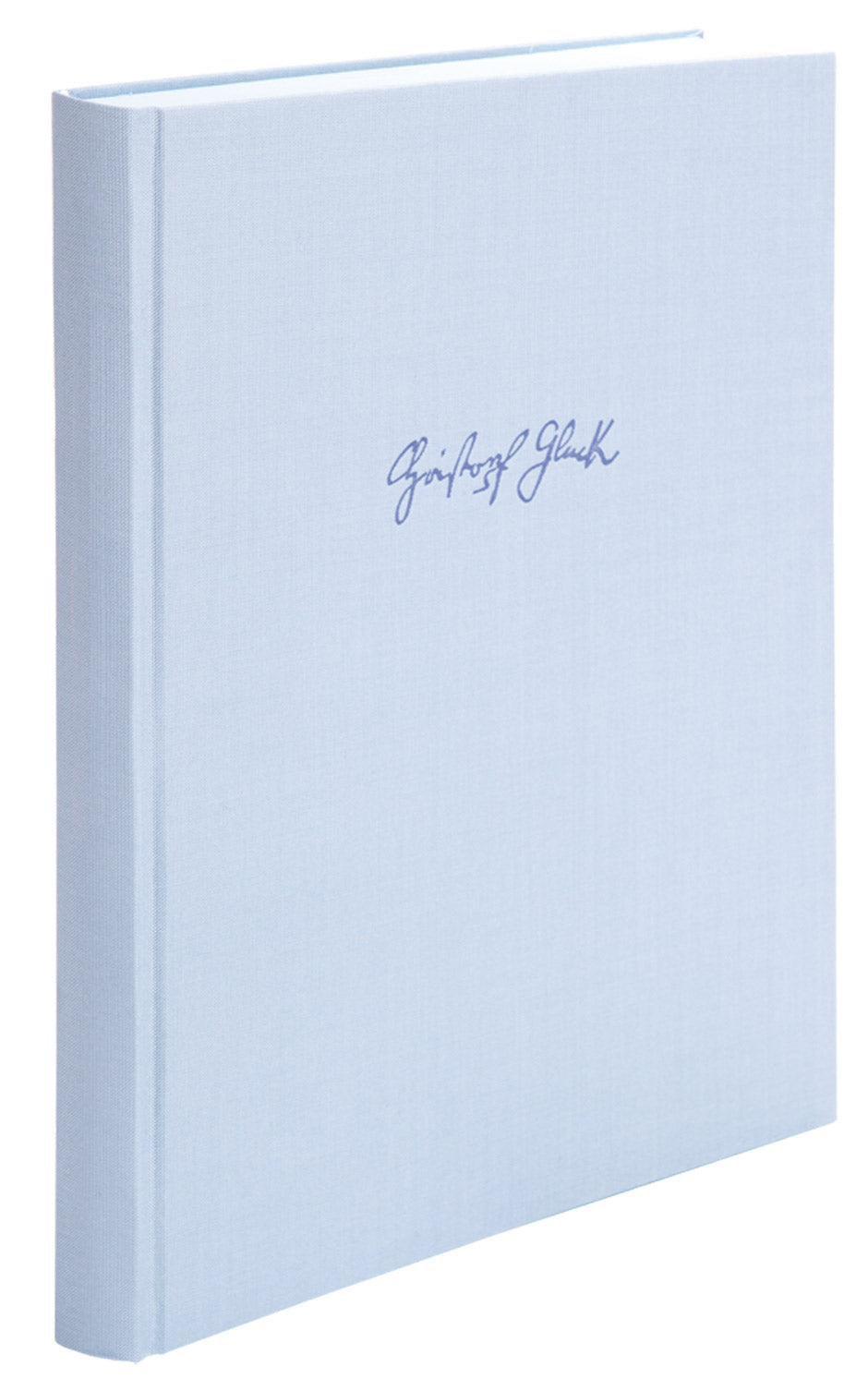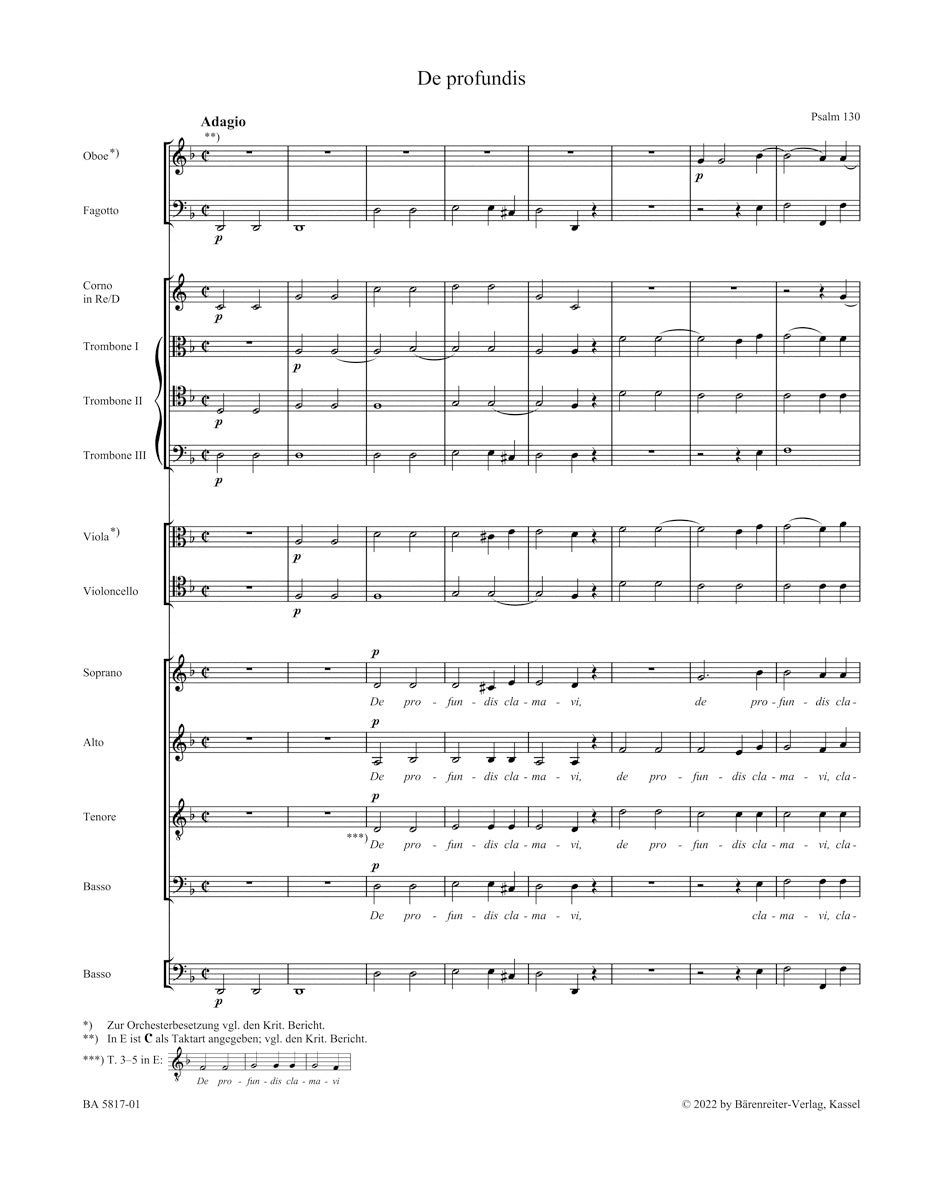Gluck: Sacred and Secular Vocal Music
Expected to ship in about a week.
- Composer: Christoph Willibald Gluck (1714-1787)
- Editor: Yuliya Shein
- Binding: Hardcover
- Work Language: Italian
- ISMN:
- Size: 10.4 x 13.0 inches
- Pages: 109
- Urtext / Critical Edition
Description
This volume offers a collection of individual sacred and secular vocal pieces that have come down to us under the name of Christoph Willibald Gluck. The selection of the works is premised on the assumed and probable authenticity of the compositions established on the basis of the transmission and the ascertained contexts of origin. The first part, "Sacred Vocal Music", includes the only surviving work by Gluck on a liturgical text, the psalm setting "De profundis clamavi ad te, Domine", while the second part, "Secular Vocal Works", comprises nine pieces on secular texts deriving from varying contexts of origin. On the one hand these are arias which can be attributed to specific opera productions Gluck was involved with, on the other hand, these are "Einlage-Arien" (insert arias) and individual pieces composed for concert performances. The volume also offers a facsimile of the extant texts to the lost "Cori da cantarsi".
In the Preface and Critical Commentary, the editor Yuliya Shein discusses in detail the complex questions regarding the assessment of the sources and the individual pieces' contexts of origin and performance.
Contents:
- Bildbeigaben
- De profundis
- Alto-Stimme mit Anmerkung von Antonio Salieri im Stimmensatz WSt
- Erste Seite der Full Scoreabschrift W
- Titelblatt and erste Seite des Full Scoredruckes E
- Arie "Ha negli occhi un tale incanto"
- Erste and siebte Seite des Autographs A
- Arie "Temer di perdere per rio sospetto"
- Erste Seite der Full Scoreabschrift B
- Arie "Rendimi alle ritorte"
- Erste Seite der Full Scoreabschrift H
- Erste Seite der Full Scoreabschrift S
- Erste Seite der Full Scoreabschrift W
- Arie "Oh dei! Che dolce incanto"
- Erste Seite der Full Scoreabschrift D
- Ausschnitt aus der Full Scoreabschrift B
- Beginn der Arie im Stimmensatz BSt (Violino I)
- Beginn der Arie im Particell BCeB
- Arie "Che legge spietata"
- Erste Seite der Full Scoreabschrift P
- Arie "Per tutto il timore perigli m'addita"
- Erste Seite der Full Scoreabschrift P
- Arie "Che pena è la mia"
- Erste Seite der Full Scoreabschrift W
- Canzonetta "O notte mia diletta"
- Erste Seite der Full Scoreabschrift S
- Air "Je vois tomber le rival qui m'outrage"
- Titelblatt der gesamten Abschrift and Beginn des Airs in der Full Scoreabschrift Tn
- Arsace (Pasticcio), Textbuch zur Aufführung Hamburg 1748
- Temistocle (Pasticcio), Textbuch zur Aufführung Kopenhagen 1749
- Tircis et Doristée (Opéra-comique), Textbuch zur Auffführung Laxenburg 1756
- Cori da cantarsi in Schloshoff, Textbuch 1754
- Teil I: Geistliche Vokalmusik
- De profundis
- Teil II: Weltliche Vokalmusik
- Arie "Ha negli occhi un tale incanto"
- Arie "Temer di perdere per rio sospetto" aus dem Pasticcio Arsace (Hamburg 1748)
- Arie "Rendimi alle ritorte" aus dem Pasticcio Arsace (Hamburg 1748)
- Arie "Oh dei! Che dolce incanto" aus dem Pasticcio Temistocle (Kopenhagen 1749)
- Arie "Che legge spitata"
- Arie "Per tutto il timore perigli m'addita"
- Arie "Che pena è la mia"
- Canzonetta "O notte mia diletta"
- Air "Je vois tomber le rival qui m'outrage" aus Tircis et Doristée (Laxenburg 1756)
- Kritischer Bericht
- Abkürzungsverzeichnis
Publishers use a lot of words to describe what they sell, and we know it can be confusing. We've tried to be as clear as possible to make sure you get exactly what you are looking for. Below are descriptions of the terms that we use to describe the various formats that music often comes in.
Choral Score
A score for vocalists that only contains the vocal lines. The instrumental parts are not there for reference. Generally, cheaper than a vocal score and requires multiple copies for purchase.
Facsimile
Reproductions of the original hand-written scores from the composer.
Full Score
For ensemble music, this indicates that the edition contains all parts on a single system (there are not separate parts for each player). In larger ensembles, this is for the conductor.
Hardcover
Hardbound. Generally either linen-covered or half-leather.
Orchestral Parts
Similar to a wind set, this is a collection of parts. In the case of strings, the numbers listed are the number of copies included, though generally these are available individually (often with minimum quantities required).
Paperback
When publishers offer multiple bindings (e.g. hardcover) or study scores, this is the "standard" version. If you're planning to play the music, this is probably what you want.
Performance / Playing Score
A score of the music containing all parts on one system, intended for players to share. There are not separate parts for each player.
Set of Parts
For ensemble music, this indicates that there are separate individual parts for each player.
Solo Part with Piano Reduction
For solo pieces with orchestra, this is a version that contains a piano reduction of the orchestra parts. For piano pieces, two copies are typically needed for performance.
Study Score
A small (think choral size) copy of the complete score meant for studying, and not playing. They make great add-ons when learning concertos and small chamber works.
Vocal Score
A score prepared for vocalists that includes the piano/organ part or a reduction of the instrumental parts.
Wind Set
For orchestral music, this is a collection of wind and percussion parts. The specific quantities of each instrument are notated.
With Audio
In addition to the printed music, the edition contains recordings of the pieces. This may be an included CD, or access to files on the internet.
With / Without Fingering (Markings)
Some publishers prepare two copies - a pure Urtext edition that includes no fingering (or bowing) suggestions and a lightly edited version that includes a minimal number of editorial markings.




